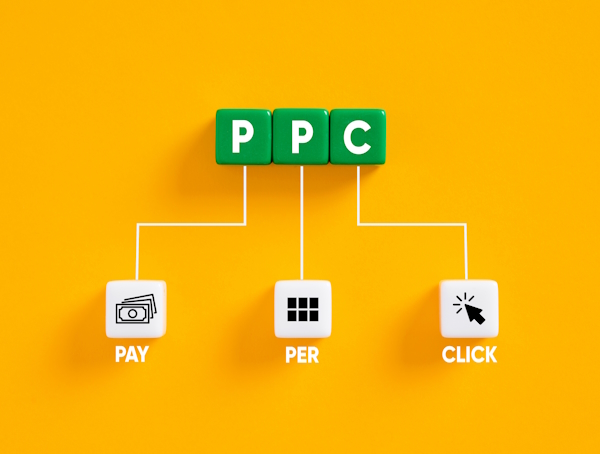In today’s digital landscape, social media platforms are not just for social interaction; they are powerful marketing tools.
Pay-per-click (PPC) advertising on social media offers businesses a unique opportunity to reach highly targeted audiences and drive engagement.
With billions of active users across platforms like Facebook, Instagram, LinkedIn, and Twitter, social media PPC advertising can significantly boost brand visibility, generate leads, and increase sales.
This article explores the ins and outs of social media PPC advertising and provides strategies for creating successful campaigns.
1. Understanding Social Media PPC Advertising
a. What is Social Media PPC?
Social media PPC advertising refers to paid ad campaigns on social media platforms, where businesses pay each time a user clicks on their ad. Unlike traditional advertising, social media PPC allows businesses to target specific demographics, interests, and behaviors, making it a highly efficient marketing strategy.
b. The Importance of Social Media PPC
Social media PPC is essential for several reasons:
- Targeted Reach: Ads can be tailored to specific demographics, interests, and behaviors, ensuring they reach the right audience.
- Engagement Opportunities: Social media platforms enable interactive content, allowing businesses to engage directly with potential customers.
- Cost-Effective Marketing: Social media PPC campaigns can fit various budgets, allowing small businesses to compete with larger companies.
2. Choosing the Right Social Media Platforms
Different social media platforms cater to different audiences and industries. Here’s a quick overview of popular platforms for PPC advertising:
a. Facebook
With over 2.8 billion monthly active users, Facebook is ideal for businesses targeting a wide audience. It offers diverse ad formats, including image, video, carousel, and slideshow ads.
b. Instagram
As a visually-driven platform, Instagram is perfect for brands in fashion, beauty, food, and lifestyle sectors. Instagram ads seamlessly integrate with users’ feeds and Stories, making them highly engaging.
c. LinkedIn
LinkedIn is the go-to platform for B2B marketing. It’s ideal for targeting professionals, businesses, and decision-makers through sponsored content, InMail ads, and text ads.
d. Twitter
Twitter’s fast-paced environment is great for real-time engagement and promotions. Businesses can run promoted tweets, trends, and accounts to increase visibility and interaction.
3. Setting Clear Objectives
Before launching your social media PPC campaign, establish clear objectives. Common goals include:
- Increasing Website Traffic: Drive more visitors to your site.
- Generating Leads: Capture contact information from potential customers.
- Boosting Sales: Increase conversions by promoting specific products or services.
- Enhancing Brand Awareness: Improve visibility and recognition within your target market.
Having specific goals will guide your campaign strategy and performance measurement.
4. Crafting Compelling Ad Copy and Visuals
a. Writing Engaging Ad Copy
Your ad copy is crucial in capturing user attention. Follow these tips:
- Be Clear and Concise: Communicate your message effectively within character limits.
- Highlight Unique Selling Points (USPs): Emphasize what makes your product or service stand out.
- Include Strong Calls-to-Action (CTAs): Encourage users to take immediate action, such as “Shop Now” or “Sign Up Today.”
b. Designing Eye-Catching Visuals
Visuals play a significant role in social media advertising. Use high-quality images or videos that resonate with your target audience and reflect your brand identity. Incorporate your brand colors and logos to enhance recognition.
5. Targeting Your Audience Effectively
a. Demographic Targeting
Social media platforms offer robust demographic targeting options. Consider factors such as age, gender, location, and education level to reach your ideal customers.
b. Interest and Behavior Targeting
Utilize interest-based and behavior-based targeting to reach users based on their interests, hobbies, and online behavior. This approach allows you to connect with individuals more likely to engage with your brand.
c. Custom Audiences
Use custom audience features to target users who have previously interacted with your business, such as website visitors or email subscribers. This strategy is often more cost-effective than acquiring new customers.
6. Budgeting and Bidding Strategies
a. Setting a PPC Budget
Determine a budget that aligns with your business goals and financial capabilities. Start with a manageable budget to test the waters and adjust as you gain insights into campaign performance.
b. Bidding Options
Choose a bidding strategy that fits your goals:
- Cost-Per-Click (CPC): Pay for each click on your ad.
- Cost-Per-Impression (CPM): Pay for every 1,000 impressions of your ad.
- Cost-Per-Action (CPA): Pay only when a specific action, such as a purchase or sign-up, is completed.
7. Tracking and Analyzing Performance
a. Setting Up Conversion Tracking
Implement conversion tracking to measure the effectiveness of your social media PPC campaigns. Use tools like Facebook Pixel or LinkedIn Insight Tag to monitor key performance indicators (KPIs), such as:
- Click-Through Rate (CTR)
- Conversion Rate
- Return on Ad Spend (ROAS)
b. Analyzing Data for Optimization
Regularly review your campaign performance and make data-driven adjustments. Identify high-performing ads, keywords, and audience segments, and allocate budget to maximize returns. A/B testing different ad formats, visuals, and messaging can also provide valuable insights.
8. Continuous Improvement and Adaptation
Social media PPC advertising requires ongoing assessment and adaptation. Stay informed about platform updates and industry trends, and be prepared to adjust your strategy based on performance data. Experiment with new ad formats and targeting strategies to continually optimize your campaigns.
Conclusion
Social media PPC advertising presents an incredible opportunity for businesses to reach targeted audiences and drive engagement.
By implementing the strategies outlined in this article, you can create effective social media campaigns that enhance brand visibility, generate leads, and increase sales.
With careful planning, compelling content, and continuous optimization, social media PPC can become a powerful component of your digital marketing strategy.






